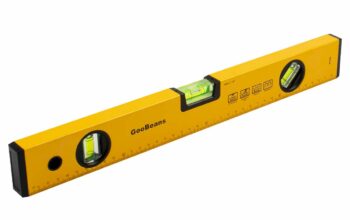In the realm of computing, traditional systems operate on a binary foundation; bits are the cornerstone, assuming values of either 0 or 1. However, this binary structure is fundamentally at odds with the nuanced complexity of quantum mechanics. Enter quantum computing, a revolutionary technology that challenges our conventional understanding of information processing by utilizing qubits—quantum bits that can embody a superposition of states. This article delves into the intricate phenomenon of superposition and entanglement, elucidating how quantum computers can accommodate units that exist between the definitive states of 0 and 1.
To comprehend the capabilities of quantum computing, one must first appreciate the world of quantum mechanics. Envision the quantum realm as a vast, amorphous ocean where particles, such as electrons, behave like waves. This fluidity permits phenomena that defy classical intuition, such as superposition and entanglement. Superposition can be likened to a spinning coin: while rotating, it does not settle on heads (1) or tails (0) until it is measured. This attribute allows qubits to represent any value between 0 and 1, effectively increasing computational power exponentially.
Superposition is not merely an abstract concept; it serves as the cornerstone of quantum computational advantage. When a qubit exists in a state of superposition, it can execute numerous calculations simultaneously. In contrast to a classical bit, which is tethered to a singular state, a qubit’s ability to manifest multiple values can be harnessed to solve complex problems at unprecedented speeds. This unique property propels quantum computers into a realm where classical algorithms falter, specifically in domains such as cryptography, optimization, and material science.
Yet, there remains a vital question: how do we manipulate and maintain these qubits in their ephemeral states? Herein lies the significance of quantum gates, analogous to classical logical gates. Quantum gates exploit the principles of quantum mechanics to perform operations on qubits, allowing for the controlled transitions between different superposition states. For instance, with the application of a Hadamard gate, a qubit can be transformed into a state that is an equal superposition of 0 and 1. This manipulation is crucial, as it sets the stage for complex quantum algorithms capable of addressing multifaceted problems.
In addition to superposition, entanglement stands as another pillar supporting the architecture of quantum computing. When qubits become entangled, the state of one qubit becomes inextricably linked with the state of another, regardless of the distance separating them. This phenomenon can be visualized as a pair of dance partners, moving in perfect harmony—if one partner executes a particular step, the other instinctively follows suit, irrespective of spatial separation. Entanglement enables quantum computers to perform operations across multiple qubits simultaneously, amplifying their computational prowess. The interplay of entangled qubits allows for a new dimension of information processing, one that transcends the limitations of classical systems.
However, the journey from theoretical models to practical applications is laden with challenges. Quantum states are notoriously delicate; they are susceptible to decoherence and noise, which threaten to disrupt their delicate balance. The phenomenon of decoherence arises when a qubit interacts with its environment, leading to a loss of information and the collapse of the superposition state into one of the definite states. To combat these hurdles, researchers are diligently developing error-correcting codes and robust quantum algorithms designed to maintain coherence and stabilize qubit states, ensuring the reliable performance of quantum systems.
The allure of quantum computing extends beyond its technical nuances; it embodies a paradigm shift in computational thought. The ability to exist between the binary confines of 0 and 1 opens a chasm of possibilities, hinting at a future where problems deemed insurmountable by classical systems could be解決の時に. This potential is especially palpable in fields such as artificial intelligence, where quantum computing’s capacity for parallelism might significantly enhance machine learning algorithms, leading to quicker data analysis and more profound insights.
It is also imperative to consider the ethical implications arising from quantum computing’s advent. As these machines evolve in capability, the potential for their use in cryptography presents both opportunities and challenges. The realization of quantum computers capable of breaking classical encryption methods has triggered an urgency within cybersecurity communities to innovate post-quantum cryptography frameworks that could withstand the power of quantum attacks. Thus, the intersection of technological advancement and ethical responsibility warrants close scrutiny, ensuring that quantum breakthroughs contribute positively to society.
In summary, quantum computers stand poised at the intersection of theoretical physics and practical application. Through the principles of superposition and entanglement, these advanced systems can transcend the binary limitations of classical computing, allowing for the representation of states that lie between 0 and 1. As advancements in quantum technology continue to unfold, it is imperative to appreciate not only their computational capabilities but also the broader implications they carry for society at large. The journey into the quantum realm is just beginning, and as we delve deeper, the prospects it holds are both exhilarating and daunting.












